Witnessing the great Migration in Masai Mara on safari
Last Updated on 5 July, 2024
Kenya’s Masai Mara Game Reserve is an excellent place for anyone who wants to go on safari, but what makes it spectacular is the chance to see an annual natural phenomena called the Great Migration, which as its name suggests involves seeing thousands of wildebeest trundle across the grassy plains in search of food. I was lucky enough to it here for myself – here’s what it’s like to see the Great Migration in the Masai Mara on safari.
I first posted this article in the middle of my Career Break – the Europe leg of my trip took a slight detour to a different continent in the first two weeks of September as I followed my friend Helen in Wonderlust on her first mini group tour to Kenya! I’d never done Africa on my own so I figured I would let an experienced and frequent African-loving solo traveller lead me around, which was a nice break from making all my own plans in the last few months, phew.
Read more about my two weeks in Kenya, but let’s go into one of the highlights from this Kenya trip – going on safari in the Maasai Mara.
Safari in the Masai Mara
A trip to Kenya and the Masai Mara is definitely not complete without checking out the famous Masai Mara National Reserve; we woke up bright and early and spent most of our time with our heads poking through the open roof trundling over dirt paths in search of wild animals spotted by our trusty guide and driver.

Going on Safari is a little like buying lottery – there’s no telling what might happen when you enter, but when you do hit the jackpot, it can be quite magical. We only spent one day in the park but spotted plenty of animals. Getting up at 5am+ was tough but the sightings are totally worth it. We entered the Sekanani Gate on the Eastern end of the park at around 715am and made the bulk of our animal spottings in the first few hours, though it slowed down in the afternoon as it just gets way too hot in midday, and both animals and humans alike just want some shelter.
Check out some of my better pictures – trying to take pictures of lions hiding in the bush with your iphone 6S is a bit trying as the zoom is just not good enough, and my Casio Exilim FR100 is better for capturing landscapes than animal close ups. It definitely doesn’t beat seeing the animals with your own eyes, so maybe it was a blessing in disguise.
I kept a running list of animals that we spotted on that trip which came up to around 30 in total, including various deer, hyenas, mongoose, monkeys, wild boars, hippos and a whole host of birds big and small. Of the Big 5, we spotted lions, elephants and buffalo – sadly no rhinos or leopards!



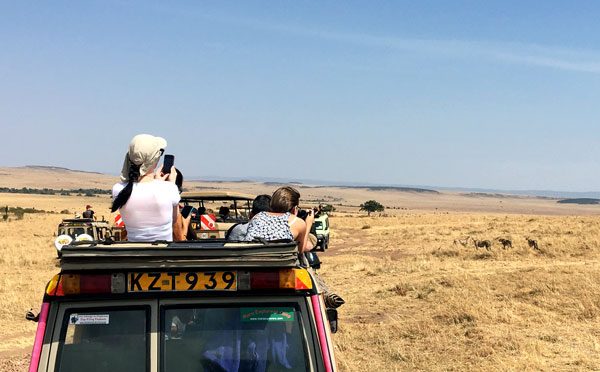
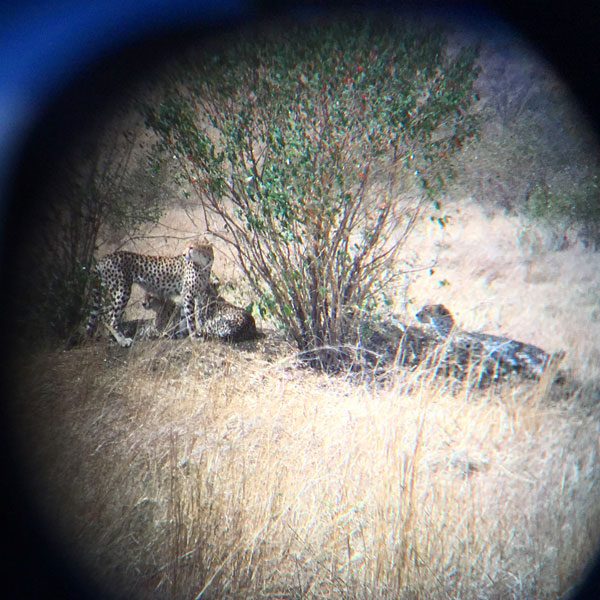

The Great Migration of Wildebeest
My true NatGeo Moment came when we neared the river and found a long line of wildebeest and zebras marching along to the river’s edge. The sight of hundreds of animals gathered together is quite impressive, but they weren’t doing very much, mostly standing around in a large group, grazing, waiting.

We waited too, our jeep settling next to several others watching the herd in front of us and the river to our left.
The Great Wildebeest Migration is the movement of over 2 million wildebeest from the Mara up north to the Serengeti in Tanzania and back again, and usually takes place in the dry season from June to September. Our guide said that sometimes there are so many animals that the wide yellow plains were transformed into a sea of brown bodies – it’s honestly hard to imagine!
The river is a precarious place for the wildebeest where they are most vulnerable – hungry crocodiles often lurk along the banks, lying in wait for an easy meal, and apparently hippos are pretty aggressive and will attack as well just for the heck of it. The idea of crossing as a group is simple logic – safety in numbers. Not all the wildebeest will survive the river crossing, but a few sacrifices keep the predators full and allow for more of the herd to make it across safely.
There’s no telling when the crossing will happen – it’s one of the things the Mara is famous for, but it really is a matter of luck because there have been people who safari for an entire week and have been unable to witness this phenomenon. One moment the animals are just standing around grazing, and then suddenly based on some invisible signal, the wildebeest at the head of the group started scrambling down the river banks. Everyone in the jeeps perked up as en masse, the entire herd surged forward in a cloud of dust.
Our driver suddenly jerked the car in reverse and we nearly fell over in surprise. All was forgiven when we now had a clear view of the stampeding wildebeest snaking through the water in a curving S shape and galloping up to safety on the opposite river bank. It’s one of those moments where you are just in awe of the majesty of nature.
It took around 20 minutes for most of the wildebeest to make it across the water – the zebras in the group had chickened out on making the crossing, while some of the herd who were further behind turned tail and retreated back across the plains.
Luckily for the Wildebeest that day, no crocs or hippos were around so they all made it across safely. There was a young wildebeest that I nicknamed ‘Wildebaby’ that was left behind as it stumbled around on its skinny legs, unable to find a foothold on the slope of the river bank and find a safe path up. You could hear exclamations and cheers from the various jeeps as Wildebaby floundered around, inching closer towards certain doom (read: crocs) that we knew lay around the river bend. After several agonizing minutes, Wildebaby somehow found its way to the top and there were sighs of relief all around, though I doubt with those survival instincts that it will live for very long!
Getting to Masai Mara National Reserve
We drove to the Masai Mara from Nairobi and it took almost 5-6 hours one way, mostly because of the road conditions. The first bit on Tarmac isn’t so bad, but the last stretch from the town of Narok to the Mara is unpaved road which is pretty rough and took 2-3 hours. The locals call it an ‘African Massage’. I’ve never been so happy to see paved tarmac in my life after going there and coming back! You do get a great view of the Great Rift Valley en route though, make sure you stop over for that!
You can fly in as well, which might be a better option for those who can afford it and want to save time and your poor body.
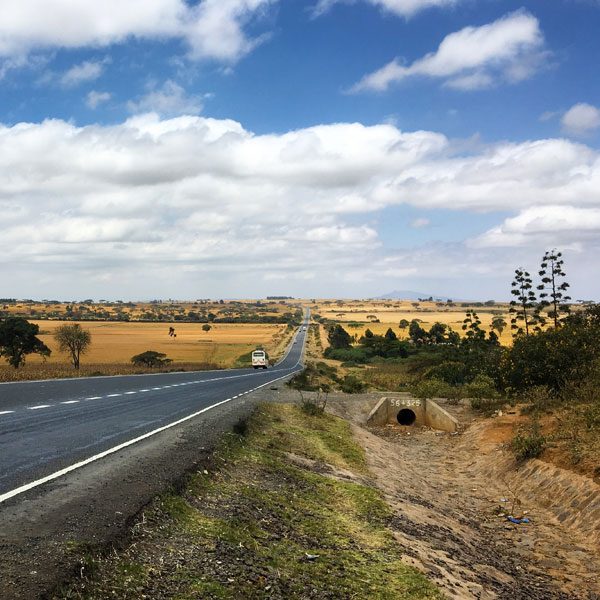
Costs
It costs US$80 per person for foreigners to enter the park for a day. This is the rate we paid as non-residents (as our accom was outside the park – those staying in the park pay US$70). East African citizens and residents have a much cheaper rate.

Our safari was organised by the Mara Explorers folk so they took care of most of the details – our group of 8 was supposed to go together, but we ended up in two four seater jeeps which was quite comfortable. We entered the park at about 7am and only left close to 5pm. At mid day we had a picnic lunch in the park on a blanket laid out under a huge tree. Note that there are no toilets in the park – you are out in the wild after all so be prepared to duck behind some bushes to pee – always carry a little bit of toilet paper and hand sanitizer with you!
Accommodation
We stayed at Mara Explorers Camp which is a short distance from the Sekenani Gate outside the National Park. There is an electric fence around the camp to protect from wandering elephants and other creatures, as well as Maasai guards patrolling at night to ensure your safety in the wild.
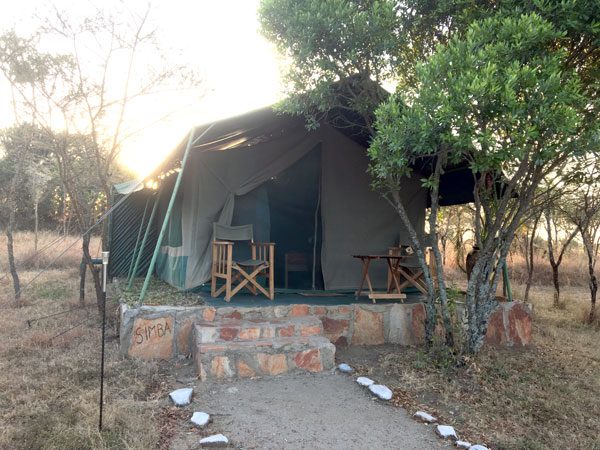
Our room (ensuite tent) was Simba, a 4-person zip-up tent with a bunk bed and 2 single beds and our own ensuite open-air toilet – overall quite comfortable though a little bit tight on space. The price for full board is 8,000 KES (around S$108) per night, but you could save by doing room only (5,000 KES, with 500 KES/day to use the kitchen) or even do tents from 1,500 – 2,000 KES.
The camp is pretty eco-friendly – it runs mostly on solar energy so Wifi and power sockets are only located in the main common area, so be prepared to go a little off-grid while you are here. The room toilet was a standard western one, but the shared ones were long drops (no flush, just your bodily waste dropping a looooong way down a hole). Mara Explorers has got a great vibe though – we mostly hung out at the bar area to chitchat, play pool and cuddle one or more of the 7 dogs wandering around the place. Really nice people as well – Moses, Laura and their crew were awesome.
Besides the safari, Mara Explorers also organised a bush walk with a local Maasai guide to nearby Siana Hill (more a mountain than a hill, it was quite a climb), followed by a visit to the local Maasai village to learn about their culture and ways.
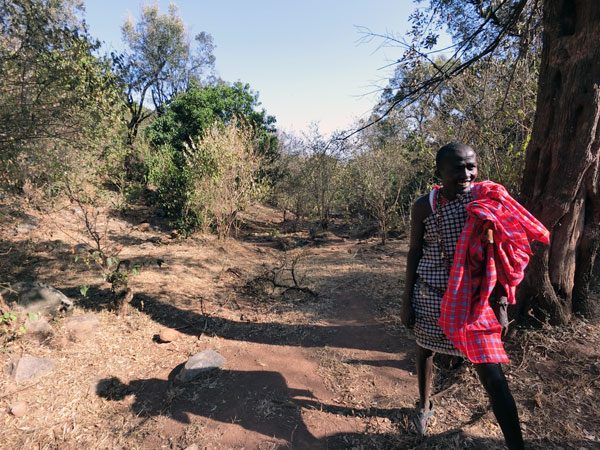
Some people even went on an early morning hot air balloon ride over the park, which even comes with a champagne breakfast but will set you back US$450 – some of my group did it and loved it, but it was a bit too expensive for my tastes.
(My splurge happened later that trip in Mombasa when I went skydiving over the amazing Diani Beach!)
My 2 weeks in Kenya were on a tour organised by the wonderful Helen from Rock My Adventure [affiliate link]. Check out her post for the full low-down on our trip. Besides Kenya, she’s quite well versed and organises tours to many other parts of Africa as well, so if you want a hassle-free fun small group experience in Africa, definitely check out Rock My Adventure [affiliate link] to learn more!
In the meantime, check out all my Kenya posts:

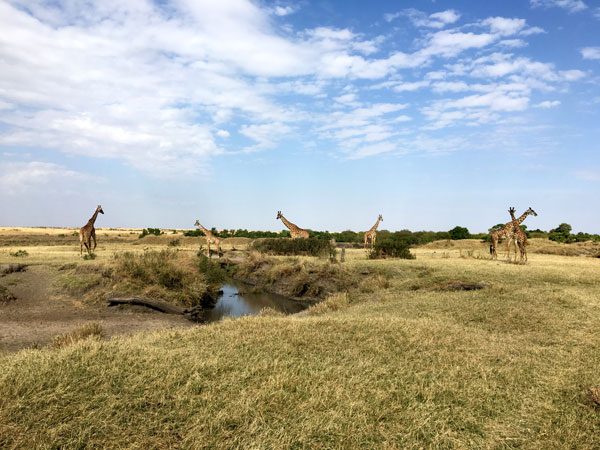
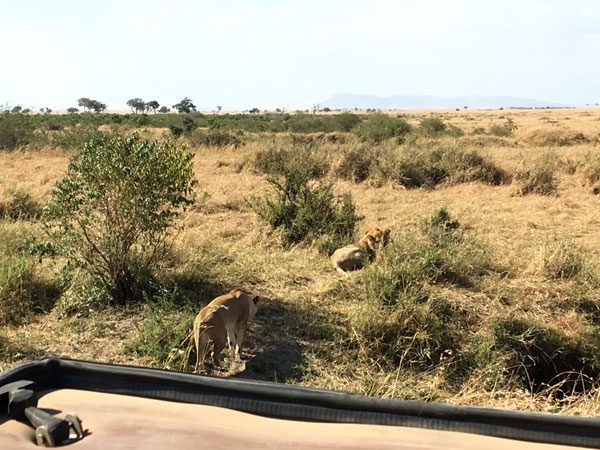
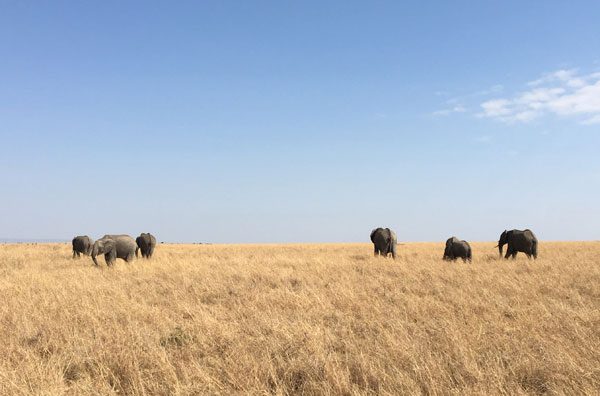
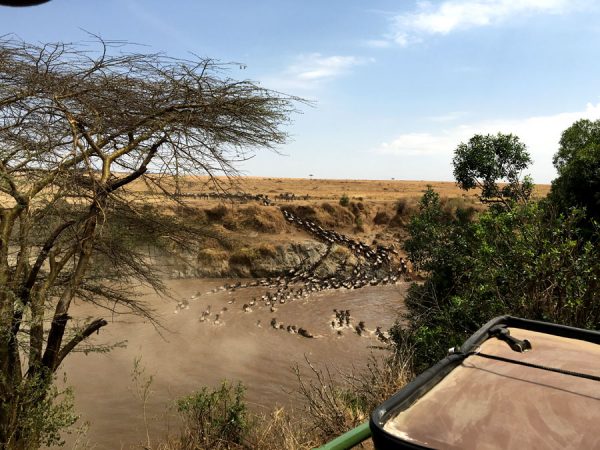

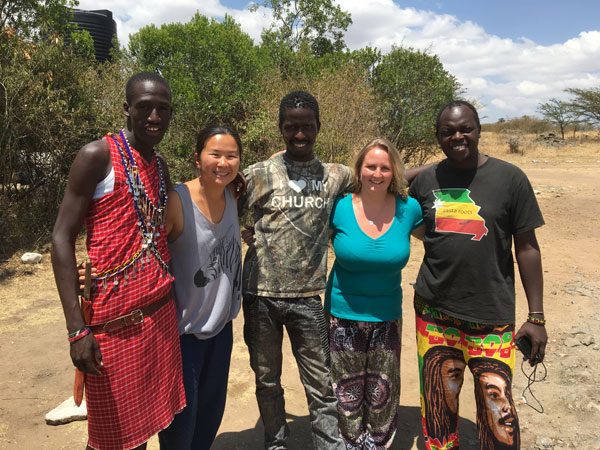

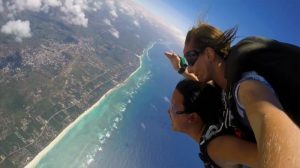
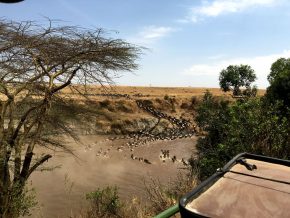

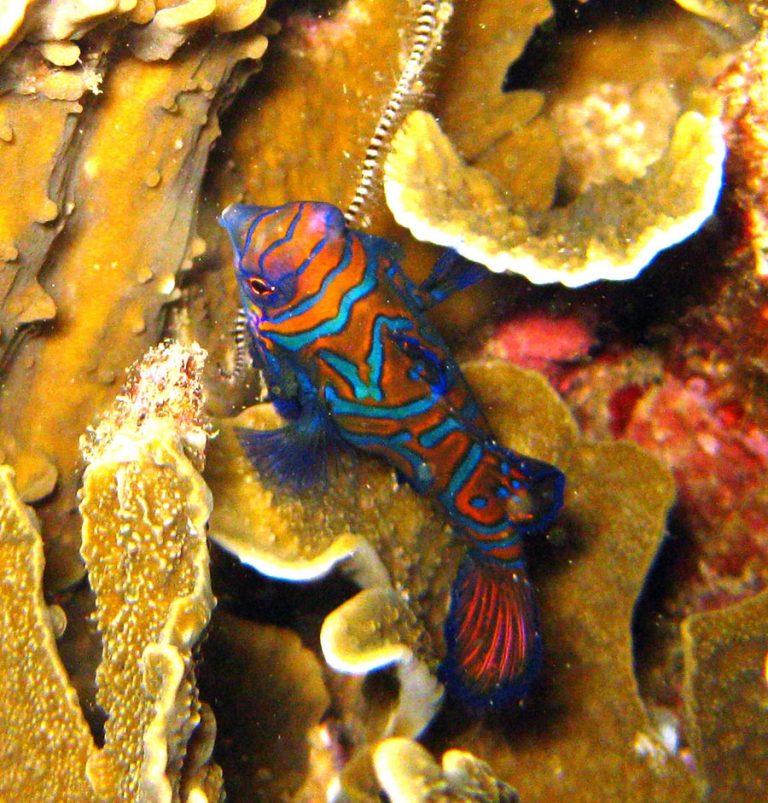
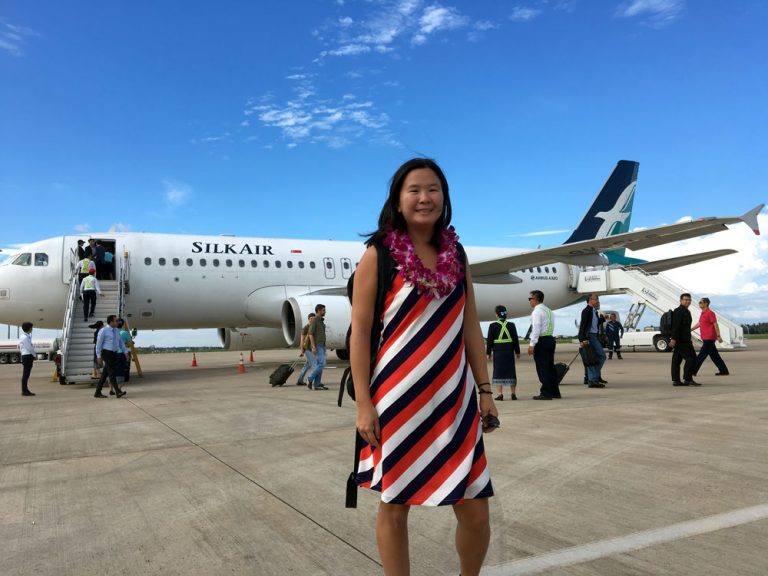


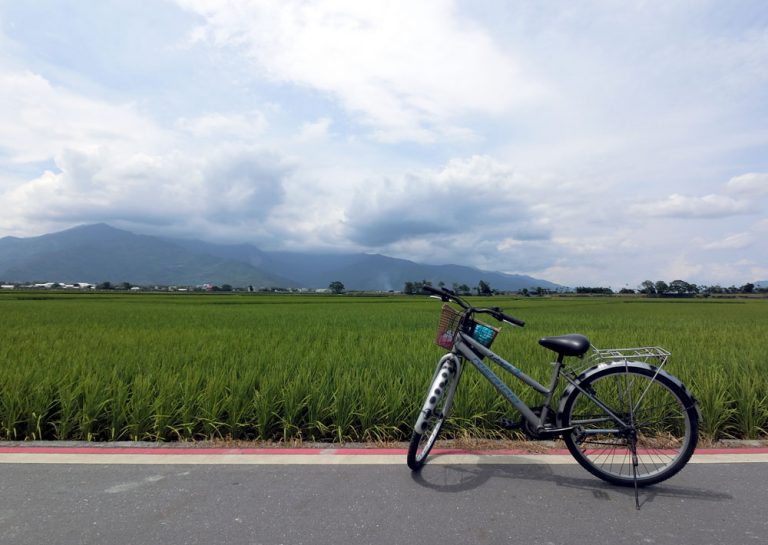
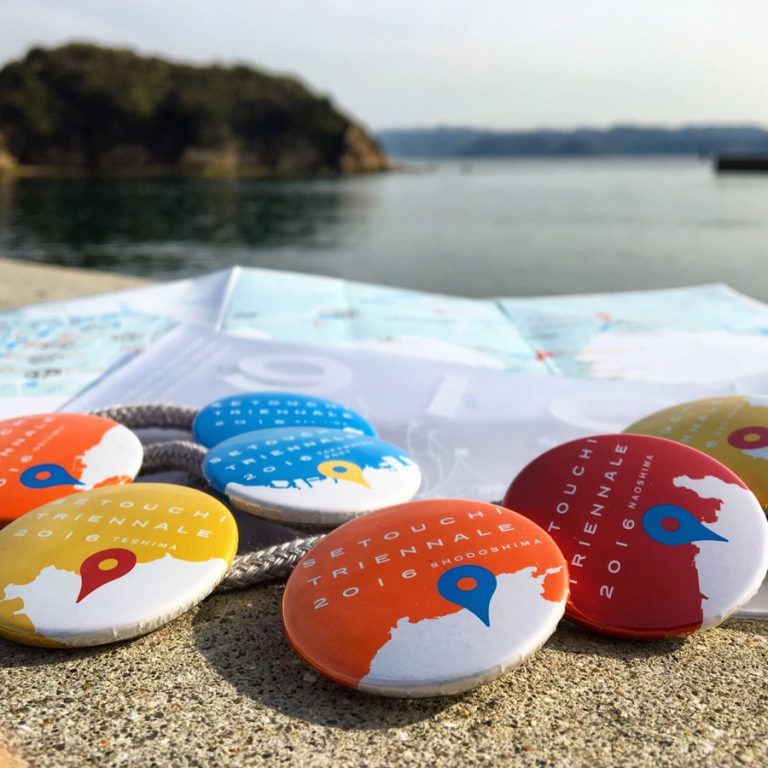
Beautifully written, Thank you for sharing your experience with us. Truly Masai Mara is a gem that one should not miss. And the wildebeest is onece in a lifetime experience.
Great experience. I had visited Masai Mara during the shoulder season and had a gala time there :)
hope you saw some cool stuff when you visited!
Masai Mara is paradise for wildlife enthusiasts. Insightful post
It’s awesome that you saw the migration in the Maasai Mara. We couldn’t see it last month, unfortunately. It had rained a bit more in Kenya and so the grass was greener and the Wildebeest decided to stay longer. It was still such an amazing experience!
Ooh great pix and your safari experience looked pretty great, so awesome you saw the big 5. I hope to see a leopard and rhino properly some time, wish me luck!
Yeah the migration was a real NatGeo documentary moment and quite surreal :)
Nice post, you really enjoyed your safari to mara. Wait… I know Helen, she loves a safari to Masai Mara so much. I read Helen’s blog too.
Yes i did enjoy the safari, and so did Helen! :)
Great safari experience! Looking forward to reading your planned coming trip to Latin America with lots of nice pictures! ?
thank you! I need to get started planning >_<